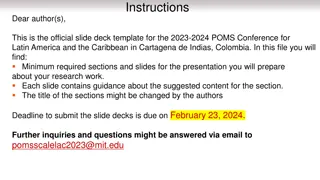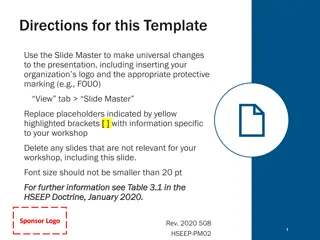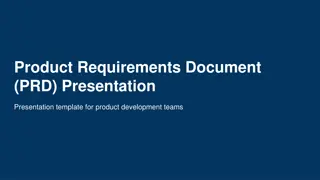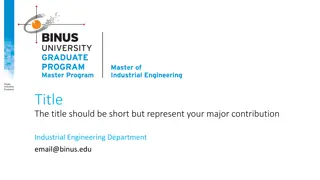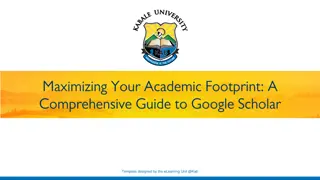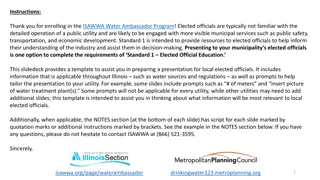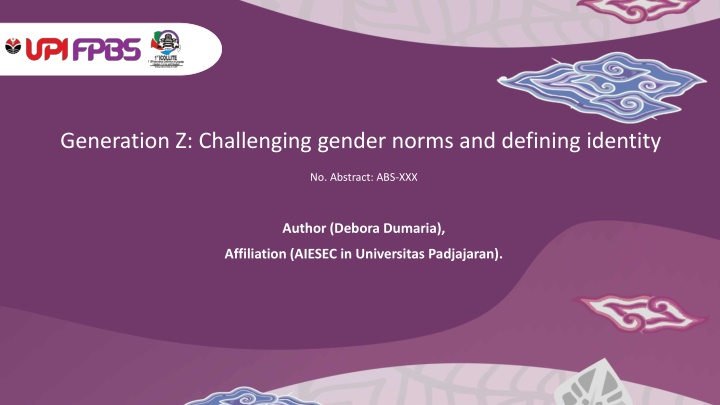
Challenging Gender Norms and Defining Identity in Generation Z
Explore how Generation Z challenges gender norms and defines identity, highlighting the impact of social structures, self-identity, and technological development. Discover the importance of gender fluidity, sexual orientation, pronouns, and the comfort of Generation Z in expressing their gender identity.
Uploaded on | 0 Views
Download Presentation

Please find below an Image/Link to download the presentation.
The content on the website is provided AS IS for your information and personal use only. It may not be sold, licensed, or shared on other websites without obtaining consent from the author. If you encounter any issues during the download, it is possible that the publisher has removed the file from their server.
You are allowed to download the files provided on this website for personal or commercial use, subject to the condition that they are used lawfully. All files are the property of their respective owners.
The content on the website is provided AS IS for your information and personal use only. It may not be sold, licensed, or shared on other websites without obtaining consent from the author.
E N D
Presentation Transcript
Generation Z: Challenging gender norms and defining identity No. Abstract: ABS-XXX Author (Debora Dumaria), Affiliation (AIESEC in Universitas Padjajaran).
INTRODUCTION Why challenging gender norms? Gender deviant behavior arises because of gender inequality. This factor is caused by social systems and structures that place men and women in a disadvantageous position (Agus, 2019). Why defining identity? Self-identity is a component of the self-concept that allows individuals to maintain a consistent stance and therefore allows a person to occupy a stable position in their environment (Rawlins, 1993). Why Generation Z? Technological development influences their values and behaviors towards gender roles, sexuality, and social justice.
LITERATURE REVIEW Meneropong Gender Melalui Kacamata Genderles (Farida, 2016), Globalisasi Lesbian, Gay, Biseksual, dan Transgender (LGBT) (Yansyah & Rahayu, 2020), Dasar Biologis Variasi Jenis kelamin, Gender, dan Orientasi Seksual (Artaria, 2016), Non- binary and genderqueer. (Monro, 2019)
METHOD descriptive qualitative method. Collect the sources > analyze > report.
FINDING AND DISCUSSION Gender Expression Gender fluidity has become part of our public lexicon recently, especially with several high-profile media stories about celebrities gender transitions (Lyall & Bernstein, 2015) and gender-fluid TV characters (Deggans, 2015) Sexual Orientation Attraction to the opposite sex is greater than attraction to the same sex. In other words, if same-sex attraction occurs, statistically the number can be said to be abnormal, because statistically normal is the average in the population (Artaria, 2016). Homo sexual (gay, lesbian, bisexual). Pronoun In English, there are two pronouns that refer to the third person; he and she, respectively, are marked as the identification of male and female. (Farida, 2016). Some people prefer gender-neutral pronouns (they/them).
CONCLUSION It can be concluded that Generation Z is more comfortable exploring and expressing their gender identity regardless of gender norms because internet and social media platforms have provided a space for Generation Z to explore and discuss gender identity freely.
REFERENCES Aqidah, J. H. N. (2022). Kritik globalisasi: Maraknya konten LGBT dalam media sosial TikTok menurut agama dan HAM. Jurnal Sosial: Jurnal Penelitian Ilmu-Ilmu Sosial, 23(2), 1 7. https://doi.org/10.33319/sos.v23i2.111 Artaria, M. D. (2016). Dasar biologis variasi jenis kelamin, gender, dan orientasi seksual. In BioKultur (Issue 2).Derian, M. V. T. (2023). Gender fluidity. Felicitas, 3(1), 61 74. https://doi.org/10.57079/feli.v3i1.105 Dhamayanti, F. S. (2022). Pro-kontra terhadap pandangan mengenai LGBT berdasarkan perspektif HAM, agama, dan hukum di Indonesia. Ikatan Penulis Mahasiswa Hukum Indonesia Law Journal, 2(2). https://doi.org/10.15294/ipmhi.v2i2.53740 Dolot, A. (2018). The characteristics of Generation Z. E-Mentor, 74, 44 50. https://doi.org/10.15219/em74.1351 Firdausy, M., & Firdausy, M. (2022). Konstruksi sosial gender di masyarakat. Gender & Society, 1, 9. Guidelines for psychological practice with transgender and gender nonconforming people. (2015). American Psychologist, 70(9), 832 864. https://doi.org/10.1037/a0039906 Horowitz, M. (2012). Self-identity theory and research methods. Journal of Research Practice, 8 .Jones, L., & Mullany, L. (2016). The problematic case of gender-neutral pronouns: A response to "A Modest Proposal". International Journal of Transgenderism, 20(2-3), 337-340. https://doi.org/10.1080/15532739.2016.1261061 Manik, T. S., Riyanti, D., Murdiono, M., & Prasetyo, D. (2021). Eksistensi LGBT di Indonesia dalam kajian perspektif HAM, agama, dan Pancasila. Jurnal Kewarganegaraan, 18(2), 84. https://doi.org/10.24114/jk.v18i2.23639 Monro, S. (2019). Non-binary and genderqueer: An overview of the field. International Journal of Transgenderism, 20(2 3), 126 131. https://doi.org/10.1080/15532739.2018.1538841 Parker, S. (2016). Gender fluidity. In Ethical ripples of creativity and innovation (pp. 165 173). Palgrave Macmillan UK. https://doi.org/
THANK YOU! Follow us @deboraadd







